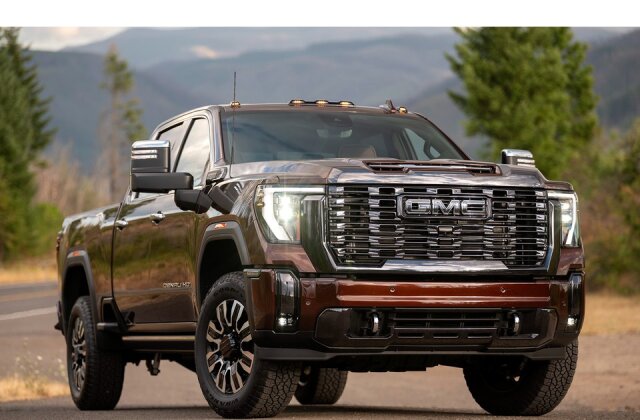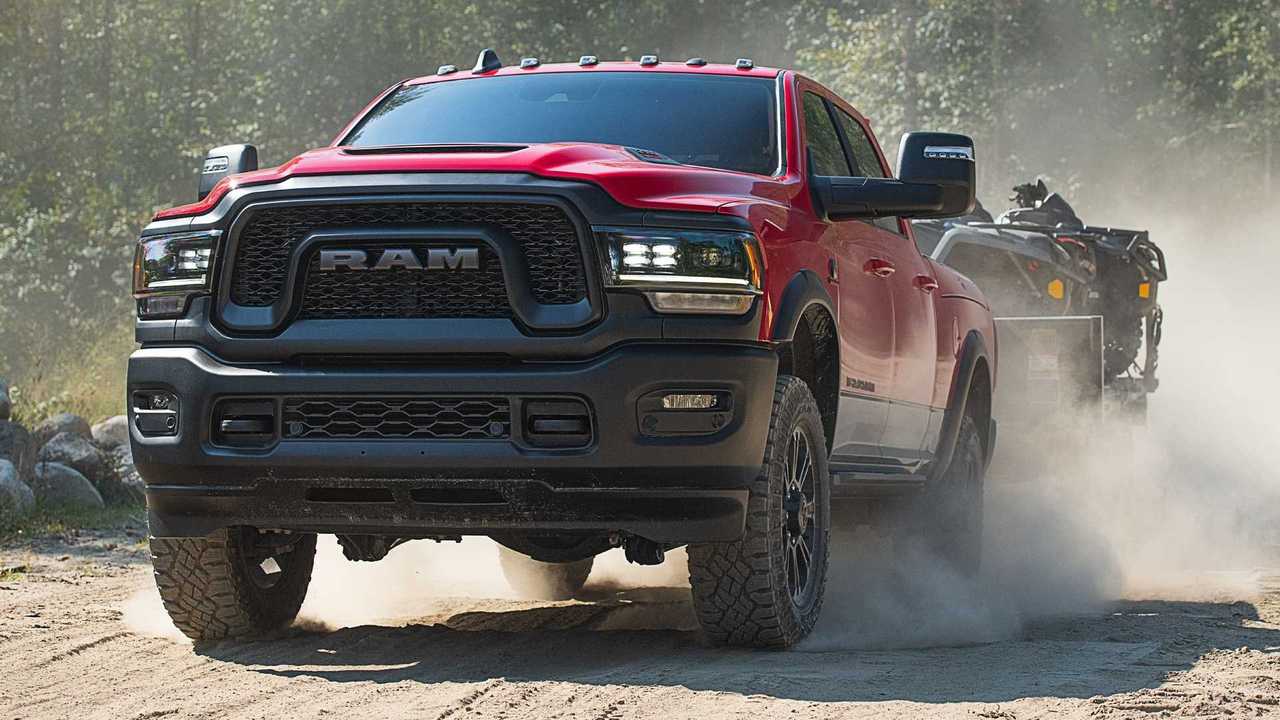The First Diesel Pickup Truck Engine: A Revolutionary Step in Automotive History
The diesel engine has long been recognized for its efficiency, power, and durability, but its journey to becoming the powerhouse behind pickup trucks has a fascinating story rooted in both technological innovation and market demand. The first diesel pickup truck engine was not merely the product of one company’s ambition but a response to evolving needs in fuel efficiency, performance, and endurance. Understanding who made the first diesel pickup truck engine, when it was developed, and the story behind it reveals a rich chapter in automotive history.
The Invention of the Diesel Engine by Rudolf Diesel
To fully appreciate the first diesel pickup truck engine, we must start with the invention of the diesel engine itself. Rudolf Diesel, a German engineer, revolutionized internal combustion engines when he invented the diesel engine in 1897. His goal was to create an engine that could achieve greater fuel efficiency than the steam and gasoline engines of the time. Diesel’s innovative approach relied on the compression of air to ignite fuel rather than a spark, as seen in gasoline engines. This method allowed diesel engines to burn fuel more efficiently and produce more torque, characteristics that would later become essential in heavy-duty applications like trucking and agriculture.
Although Diesel’s invention was initially used for industrial applications, its potential for powering vehicles, particularly trucks, became apparent as the automotive industry grew in the early 20th century.
Early Adoption of Diesel Engines in Trucks
The first widespread use of diesel engines in vehicles came during the 1920s and 1930s, primarily in Europe. Mercedes-Benz, one of the pioneering companies in automotive diesel engines, introduced its first diesel-powered truck in 1924. This truck was designed for industrial and commercial use, aimed at businesses that required reliable, fuel-efficient transportation for heavy loads. At this time, diesel engines were mostly used in commercial trucks and heavy machinery, as their slow acceleration and heavy weight made them less suitable for passenger cars and light-duty vehicles.
By the mid-1930s, other companies such as MAN (Maschinenfabrik Augsburg-Nürnberg) and Hercules had also begun to develop diesel engines for heavy-duty trucks. The benefits of diesel engines in terms of fuel economy and longevity became more widely recognized, especially in the trucking industry, where long-distance hauling and heavy towing were common.
However, the leap from diesel engines in commercial trucks to pickup trucks designed for individual use did not occur until several decades later. The United States, a hub for the pickup truck market, was slower to adopt diesel engines in this segment, as gasoline engines dominated the light-duty vehicle industry for most of the early and mid-20th century.
The Birth of the Diesel Pickup Truck Engine
The first diesel pickup truck engine in the United States arrived in the 1970s, spurred by a combination of rising fuel prices and the oil crisis. With the 1973 oil embargo and subsequent fuel shortages, consumers and industries alike sought more fuel-efficient alternatives to traditional gasoline engines. Diesel engines, with their superior fuel efficiency, emerged as a viable solution for reducing fuel consumption in trucks.
The first American automaker to introduce a diesel engine option in a pickup truck was General Motors (GM). In 1978, GM made history by launching the Oldsmobile 5.7L V8 diesel engine, which was initially developed for passenger cars, into its Chevrolet and GMC C/K pickup trucks. This marked the beginning of diesel engine options in light-duty trucks, setting a precedent for other automakers to follow.
General Motors and the 1978 Diesel Pickup Truck
General Motors’ decision to incorporate a diesel engine into its light-duty pickup trucks was a direct response to the oil crisis and consumer demand for better fuel efficiency. The Oldsmobile 5.7L V8 diesel engine, although initially designed for sedans and station wagons, was adapted for the Chevrolet and GMC trucks, becoming the first diesel engine offered in a light-duty pickup truck in the United States.
This move was significant because GM was primarily competing with Ford and Chrysler (Dodge), both of which were still exclusively offering gasoline engines in their pickup trucks. The Oldsmobile 5.7L diesel engine gave GM a competitive edge by offering consumers a more fuel-efficient option at a time when fuel prices were skyrocketing.
Challenges with the First Diesel Pickup Engine
Despite GM’s pioneering efforts, the first diesel pickup truck engine was not without its challenges. The Oldsmobile 5.7L V8 diesel engine faced significant reliability issues. It was hastily adapted from a gasoline engine design, and the materials and engineering were not robust enough to handle the high compression and stresses unique to diesel engines. As a result, many early diesel pickups experienced engine failures, leading to warranty claims and a tarnished reputation for diesel trucks in the consumer market.
However, GM’s venture into diesel pickups wasn’t a complete failure. It paved the way for improvements in diesel technology and demonstrated that there was a demand for diesel-powered pickups, especially among consumers who needed trucks for towing and hauling, where diesel engines' high torque was particularly useful.
Ford and Dodge Enter the Diesel Pickup Market
In the 1980s, after GM’s introduction of the diesel pickup truck engine, other American automakers began to see the potential of diesel power in the light-duty truck market. Ford and Dodge (now Ram) quickly followed suit.
-
Ford introduced its first diesel-powered pickup truck in 1983 with the launch of the 6.9L International Harvester V8 engine in its F-250 and F-350 models. Unlike GM’s earlier attempt, Ford partnered with Navistar International (a manufacturer of heavy-duty diesel engines), which helped create a more reliable and robust diesel engine specifically designed for trucks.
-
Dodge, too, entered the diesel pickup market in 1989, offering the legendary 5.9L Cummins turbo diesel engine in its Ram pickup. This engine became an industry standard for durability and performance, particularly in towing and hauling heavy loads. The Cummins diesel engine’s introduction marked a turning point, as it established a reputation for reliability and power, which diesel trucks had struggled with in the past.
Cummins: The Game-Changer in Diesel Pickup Truck Engines
The introduction of the Cummins 5.9L Turbo Diesel engine in the Dodge Ram in 1989 is widely regarded as a defining moment in the history of diesel pickup truck engines. Cummins, a company known for its expertise in manufacturing heavy-duty diesel engines, brought its years of experience in the industrial sector to the light-duty truck market, revolutionizing the way consumers viewed diesel pickups.
The Cummins engine offered high torque, long-lasting durability, and superior towing capacity compared to both gasoline engines and previous diesel offerings. Its success encouraged Ford and GM to continue refining their diesel engine options, creating healthy competition and driving innovation in the diesel pickup market throughout the 1990s and beyond.
The Legacy of Diesel Pickup Truck Engines
Since the introduction of diesel engines in pickup trucks, they have become synonymous with power, torque, and longevity. Farmers, contractors, and blue-collar workers across industries have come to rely on diesel pickups for their ability to haul heavy loads, tow trailers, and endure the demands of tough working environments.
Today, Ford, GM, and Ram continue to dominate the diesel pickup truck market, with each company offering advanced diesel engines that are more powerful, fuel-efficient, and reliable than ever before. Diesel engines in pickup trucks have evolved significantly from their early days, incorporating advanced technologies like turbocharging, common rail fuel injection, and intercooling to increase performance and reduce emissions.
The legacy of the first diesel pickup truck engine, launched by GM in 1978, set the stage for decades of innovation. Though initially met with challenges, the introduction of diesel engines into the light-duty truck market proved to be a transformative moment in the history of trucks. Today’s diesel pickups are a testament to the evolution of this technology, offering unmatched power and efficiency for those who rely on their trucks for work and heavy-duty applications.
Conclusion
The story of the first diesel pickup truck engine is one of innovation driven by necessity. General Motors took the bold step of introducing the diesel engine into its pickup trucks in 1978, responding to a growing demand for fuel efficiency in the face of an oil crisis. While the early models faced significant challenges, they laid the groundwork for the diesel engines we see in modern pickups today. From the humble beginnings of GM’s 5.7L V8 to the game-changing Cummins engine in the Dodge Ram, diesel pickup truck engines have come a long way, becoming the engine of choice for those who need power, reliability, and efficiency.



